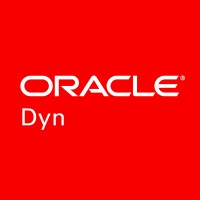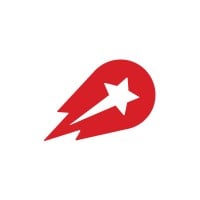
Dyn Company Cyber Security Posture
dyn.comOracle Dyn, an Oracle Cloud Infrastructure global business unit (GBU), helps companies build and operate a secure, intelligent cloud edge, protecting them from a complex and evolving cyberthreat landscape. Our managed Web Application Security, DNS, and Email Delivery services are powered by a global network that drives 40 billion traffic optimization decisions daily. More than 4,500 customers rely on Oracle Dyn edge services, including preeminent digital brands such as Netflix, Twitter, CNBC, and LinkedIn. Deployed as standalone solutions or fully integrated with Oracle Cloud Infrastructure, Oracle Dyn edge services are the key to delivering resilient, high-performance sites and applications.
Dyn Company Details
dyn
406 employees
9008.0
none
Technology, Information and Internet
dyn.com
Scan still pending
DYN_2862549
In-progress
Between 200 and 800
This score is AI-generated and less favored by cyber insurers, who prefer the TPRM score.
 Dyn Global Score
Dyn Global Score.png)

Dyn Company Scoring based on AI Models
| Model Name | Date | Description | Current Score Difference | Score |
|---|---|---|---|---|
| AVERAGE-Industry | 03-12-2025 | This score represents the average cybersecurity rating of companies already scanned within the same industry. It provides a benchmark to compare an individual company's security posture against its industry peers. | N/A | Between 200 and 800 |
Dyn Company Cyber Security News & History
| Entity | Type | Severity | Impact | Seen | Url ID | Details | View |
|---|---|---|---|---|---|---|---|
| Oracle | Breach | 100 | 5 | 08/2016 | ORA392622 | Link | |
Rankiteo Explanation : Attack threatening the organization's existenceDescription: A Russian cybercrime group breached 100 computer systems belonging to Oracle's retail division and MICROS point-of-sale credit card payment systems. It did not expose corporate networks and other cloud and service offerings that were not affected by the breach. Oracle urged Micros customers to change their passwords and any passwords used by Micros representatives to access their on-premise systems. | |||||||
| Oracle | Breach | 100 | 5 | 3/2025 | ORA344032125 | Link | |
Rankiteo Explanation : Attack threatening the organization’s existenceDescription: Oracle recently faced allegations of a data breach, with a threat actor claiming to have stolen 6 million records from Oracle Cloud's SSO login servers. Oracle has denied any breach, stating there was no compromise of their cloud services and customers' data remained secure. The threat actor, rose87168, attempted to sell the data and claimed the information includes SSO passwords, Java Keystore files, key files, and JPS keys from Oracle Cloud servers. Despite encrypted and hashed passwords requiring decryption or cracking, the impact of such a breach—if proven accurate—could potentially be significant, undermining trust in Oracle's cloud security and potentially impacting customers whose data was compromised. | |||||||
| Oracle Cloud | Breach | 100 | 5 | 3/2025 | ORA615032225 | Link | |
Rankiteo Explanation : Attack threatening the organization’s existenceDescription: The cyberattack on Oracle Cloud orchestrated by 'rose87168' led to the theft of 6 million records potentially affecting over 140,000 tenants. Exfiltrated data includes sensitive JKS files, encrypted SSO passwords, key files, and JPS keys. This information is now sold on dark web forums. The breach, exploiting CVE-2021-35587, poses risks of unauthorized access and corporate espionage given the type of data stolen. Oracle's compromised subdomain and vulnerable software version highlight security gaps and raise concerns of lateral movement within the cloud environment. | |||||||
| Oracle Health | Breach | 85 | 4 | 3/2025 | ORA526032825 | Link | |
Rankiteo Explanation : Attack with significant impact with customers data leaksDescription: A breach at Oracle Health has resulted in the theft of patient data from legacy servers impacting multiple US healthcare organizations and hospitals. Unauthorized access by a threat actor after January 22, 2025, led to the exfiltration of Electronic Health Records (EHR) data with potential violations of HIPAA laws. There is uncertainty whether ransomware was involved, but Oracle Health's response has been criticized for lack of transparency and failure to provide proper guidance and documentation, leaving hospitals to navigate the aftermath themselves. | |||||||
| Oracle Cloud | Breach | 100 | 5 | 3/2025 | ORA805033125 | Link | |
Rankiteo Explanation : Attack threatening the organization’s existenceDescription: Oracle Cloud faced an alleged data breach, claimed by a threat actor named Rose87168, affecting over 140,000 tenants and potentially exposing 6 million records including sensitive SSO credentials, LDAP passwords, and OAuth2 keys. Despite initial denials, evidence from security researchers at CloudSEK and confirmation from Trustwave SpiderLabs suggest the breach is legitimate, likely due to a critical vulnerability (CVE-2021-35587) in Oracle Access Manager. The breach's nature and the threat to sell or release the data indicate a severe security lapse potentially compromising personal and financial information. | |||||||
| Oracle Health | Breach | 85 | 4 | 4/2025 | ORA455040125 | Link | |
Rankiteo Explanation : Attack with significant impact with customers data leaksDescription: Oracle Health, the healthcare subsidiary of Oracle Corporation, experienced a data breach involving legacy Cerner data migration servers. This incident, which Oracle has communicated to its customers through private letters, is reported to have potentially exposed sensitive customer data. The breach is a consequence of Oracle's acquisition of Cerner Corp, a notable electronic health records business, as Oracle aimed to transition the healthcare software to cloud infrastructure. The significance of the data involved and the potential ramifications of such breaches in the healthcare sector underline the serious nature of this cybersecurity event. | |||||||
| Oracle | Breach | 100 | 7 | 4/2025 | ORA656040225 | Link | |
Rankiteo Explanation : Attack that could injure or kill peopleDescription: Oracle faced two data security incidents with reported poor incident communication. An attacker allegedly accessed login servers and legacy Cerner data, leading to customers' personal information being at risk. Missteps in Oracle's response include outright denial, potentially misleading statements, and accusations of deleting evidence online, compounding the damage to their reputation. | |||||||
| Oracle Corporation | Breach | 100 | 5 | 4/2025 | ORA956040325 | Link | |
Rankiteo Explanation : Attack threatening the organization’s existenceDescription: Oracle Corporation endured a data breach affecting its Gen 1 servers, with no complete PII exposure but involving 6 million data records including usernames, email addresses, and hashed passwords. Sensitive credentials related to SSO and LDAP were also compromised. The breach, attributed to the threat actor 'rose87168' via a 2020 Java exploit, resulted in the theft of JKS files and Enterprise Manager JPS keys from legacy systems approximately 16 months old. Oracle has informed clients and taken steps to bolster Gen 1 server security while maintaining that its Gen 2 servers and primary Oracle Cloud infrastructure remain secure. | |||||||
| Oracle | Breach | 60 | 3 | 4/2025 | ORA1045040925 | Link | |
Rankiteo Explanation : Attack with significant impact with internal employee data leaksDescription: Oracle confirmed a security incident involving obsolete servers that resulted in the theft and leakage of user credentials. Although Oracle Cloud services remained uncompromised, affected servers were part of what was formerly known as Oracle Cloud Classic. The breach brought to light legacy data, including user emails, hashed passwords, and usernames, some dating back to 2025. The event underscores the risks of maintaining outdated systems and the importance of clear communication in the face of cybersecurity incidents. Primary concerns revolve around the potential misuse of the stolen credential information and Oracle's subsequent efforts to mitigate any associated risks. | |||||||
| Dyn | Cyber Attack | 60 | 2 | 10/2016 | DYN12547622 | Link | |
Rankiteo Explanation : Attack limited on finance or reputationDescription: DNS provider Dyn site was hit by a significant distributed denial-of-service (DDoS) attack. Web-users were struggling to reach some of the world’s most well-known websites – including Twitter, Spotify, Github, Reddit, and Airbnb after the DDoS attack. | |||||||
| Oracle | Cyber Attack | 100 | 5 | 5/2025 | ORA857052025 | Link | |
Rankiteo Explanation : Attack threatening the organization's existenceDescription: Oracle Cloud Infrastructure (OCI) experienced an outage in Europe earlier today, affecting the Germany Central (Frankfurt) region. The OCI identity platform was down in parts of Europe around 0700 UTC, with a surge in outage reports peaking at 111 at about 0830 UTC. Attempts to failover to the Netherlands Northwest (Amsterdam) were unsuccessful. Last month, Oracle denied and then admitted to a cyberattack on its cloud security. Although Oracle initially claimed there was no breach, it later acknowledged an intrusion into its public cloud empire, specifically Oracle Cloud Classic. The US government's CISA issued an alert in response to the security lapse. | |||||||
Dyn Company Subsidiaries

Oracle Dyn, an Oracle Cloud Infrastructure global business unit (GBU), helps companies build and operate a secure, intelligent cloud edge, protecting them from a complex and evolving cyberthreat landscape. Our managed Web Application Security, DNS, and Email Delivery services are powered by a global network that drives 40 billion traffic optimization decisions daily. More than 4,500 customers rely on Oracle Dyn edge services, including preeminent digital brands such as Netflix, Twitter, CNBC, and LinkedIn. Deployed as standalone solutions or fully integrated with Oracle Cloud Infrastructure, Oracle Dyn edge services are the key to delivering resilient, high-performance sites and applications.
Access Data Using Our API

Get company history
.png)
Dyn Cyber Security News
Leidos acquires Kudu Dynamics for $300M to enhance AI-driven offensive cyber, EW
WASHINGTON — Defense and information technology company Leidos announced today it acquired Kudu Dynamics, a cybersecurity and networks ...
AT&T Dynamic Defense: Reinventing Cybersecurity at the Network Edge – Senthil Ramakrishnan – SCA25 #1
AT&T Dynamic Defense, a standout SC Awards Finalist, is transforming cybersecurity by moving threat defense to the network edge.
AT&T and Palo Alto Networks Revolutionize Business Security
AT&T Dynamic Defense™, Palo Alto Networks will provide real-time threat prevention, automated risk response, AI-driven operations, and more.
Automating Zero Trust in Healthcare: From Risk Scoring to Dynamic Policy Enforcement Without Network Redesign
This definitive guide will help you navigate the selection process with confidence and accelerate your path to Zero Trust maturity.
Cyber incident response in 2025: Rising risks and dynamic challenges
In 2025, business security professionals will likely face three significant trends shaping the way cyber incidents are managed.
(PDF) A comprehensive survey of manual and dynamic approaches for cybersecurity taxonomy generation
The aim of this work is to provide a systematic literature review of techniques for taxonomy generation across the cybersecurity domain.
Dynamic Standards International Partners on Cybersecurity Training
GTIA and Pax8 Academy are aligning and updating standardised cybersecurity training for small and medium businesses and IT specialists.
Top 10 Best Dynamic Malware Analysis Tools in 2025
10 Best Dynamic Malware Analysis Tools · 1. ANY.RUN (Best Overall) · 2. Cuckoo Sandbox · 3. Joe Sandbox · 4. Hybrid Analysis (CrowdStrike Falcon ...
Securing the Legacy: How AT&T's Dynamic Defense Protects the Dallas Cowboys
AT&T's Dynamic Defense™ is embedded directly into the Cowboys' AT&T Dedicated Internet connection to protect against cyber threats.

Dyn Similar Companies

Independiente / Freelance
La etimología de la palabra deriva del término medieval inglés usado para un mercenario (free-independiente o lance-lanza), es decir, un caballero que no servía a ningún señor en concreto y cuyos servicios podían ser alquilados por cualquiera. El término fue acuñado inicialmente por Sir Walter Sc

Binance
Binance is the world’s leading blockchain ecosystem and cryptocurrency infrastructure provider with a product suite that includes the world's largest digital asset exchange and much more. Trusted by over 200 millions of users worldwide, the Binance platform is dedicated to increasing the freedom of

Delivery Hero
As the world’s leading local delivery platform, our mission is to deliver an amazing experience, fast, easy, and to your door. We operate in over 70+ countries worldwide, powered by tech but driven by people. As one of Europe’s largest tech platforms, we enable ambitious talent to deliver solutions

Taobao Marketplace
Launched in May 2003, Taobao Marketplace (www.taobao.com) is the online shopping destination of choice for Chinese consumers looking for wide selection, value and convenience. Shoppers choose from a wide range of products and services on Taobao Marketplace, which features hundreds of millions of pro

Booking Holdings (NASDAQ: BKNG)
Booking Holdings is the world’s leading provider of online travel & related services, provided to consumers and local partners in more than 220 countries and territories through six primary consumer-facing brands: Booking.com, Priceline, Agoda, Rentalcars.com, KAYAK and OpenTable. Collectively, Book

The Death Star
The mission of the Death Star is to keep the local systems "in line". As we have recently dissolved our Board of Directors, there is little resistance to our larger goal of universal domination. Our Stormtroopers are excellent shots and operate with our Navy, and are fielded like marines - sep

Frequently Asked Questions (FAQ) on Cybersecurity Incidents
Dyn CyberSecurity History Information
Total Incidents: According to Rankiteo, Dyn has faced 11 incidents in the past.
Incident Types: The types of cybersecurity incidents that have occurred include ['Cyber Attack', 'Breach'].
Total Financial Loss: The total financial loss from these incidents is estimated to be {total_financial_loss}.
Cybersecurity Posture: The company's overall cybersecurity posture is described as Oracle Dyn, an Oracle Cloud Infrastructure global business unit (GBU), helps companies build and operate a secure, intelligent cloud edge, protecting them from a complex and evolving cyberthreat landscape. Our managed Web Application Security, DNS, and Email Delivery services are powered by a global network that drives 40 billion traffic optimization decisions daily. More than 4,500 customers rely on Oracle Dyn edge services, including preeminent digital brands such as Netflix, Twitter, CNBC, and LinkedIn. Deployed as standalone solutions or fully integrated with Oracle Cloud Infrastructure, Oracle Dyn edge services are the key to delivering resilient, high-performance sites and applications..
Detection and Response: The company detects and responds to cybersecurity incidents through {description_of_detection_and_response_process}.
Incident Details
Incident 1: Ransomware Attack
Title: {Incident_Title}
Description: {Brief_description_of_the_incident}
Date Detected: {Detection_Date}
Date Publicly Disclosed: {Disclosure_Date}
Date Resolved: {Resolution_Date}
Type: {Type_of_Attack}
Attack Vector: {Attack_Vector}
Vulnerability Exploited: {Vulnerability}
Threat Actor: {Threat_Actor}
Motivation: {Motivation}
Incident 2: Data Breach
Title: {Incident_Title}
Description: {Brief_description_of_the_incident}
Date Detected: {Detection_Date}
Date Publicly Disclosed: {Disclosure_Date}
Date Resolved: {Resolution_Date}
Type: {Type_of_Attack}
Attack Vector: {Attack_Vector}
Vulnerability Exploited: {Vulnerability}
Threat Actor: {Threat_Actor}
Motivation: {Motivation}
Common Attack Types: The most common types of attacks the company has faced are ['Breach', 'Cyber Attack'].
Identification of Attack Vectors: The company identifies the attack vectors used in incidents through {description_of_identification_process}.
Impact of the Incidents
Incident 1: Ransomware Attack
Financial Loss: {Financial_Loss}
Data Compromised: {Data_Compromised}
Systems Affected: {Systems_Affected}
Downtime: {Downtime}
Operational Impact: {Operational_Impact}
Conversion Rate Impact: {Conversion_Rate_Impact}
Revenue Loss: {Revenue_Loss}
Customer Complaints: {Customer_Complaints}
Brand Reputation Impact: {Brand_Reputation_Impact}
Legal Liabilities: {Legal_Liabilities}
Identity Theft Risk: {Identity_Theft_Risk}
Payment Information Risk: {Payment_Information_Risk}
Incident 2: Data Breach
Financial Loss: {Financial_Loss}
Data Compromised: {Data_Compromised}
Systems Affected: {Systems_Affected}
Downtime: {Downtime}
Operational Impact: {Operational_Impact}
Conversion Rate Impact: {Conversion_Rate_Impact}
Revenue Loss: {Revenue_Loss}
Customer Complaints: {Customer_Complaints}
Brand Reputation Impact: {Brand_Reputation_Impact}
Legal Liabilities: {Legal_Liabilities}
Identity Theft Risk: {Identity_Theft_Risk}
Payment Information Risk: {Payment_Information_Risk}
Average Financial Loss: The average financial loss per incident is {average_financial_loss}.
Commonly Compromised Data Types: The types of data most commonly compromised in incidents are {list_of_commonly_compromised_data_types}.
Incident 1: Ransomware Attack
Entity Name: {Entity_Name}
Entity Type: {Entity_Type}
Industry: {Industry}
Location: {Location}
Size: {Size}
Customers Affected: {Customers_Affected}
Incident 2: Data Breach
Entity Name: {Entity_Name}
Entity Type: {Entity_Type}
Industry: {Industry}
Location: {Location}
Size: {Size}
Customers Affected: {Customers_Affected}
Response to the Incidents
Incident 1: Ransomware Attack
Incident Response Plan Activated: {Yes/No}
Third Party Assistance: {Yes/No}
Law Enforcement Notified: {Yes/No}
Containment Measures: {Containment_Measures}
Remediation Measures: {Remediation_Measures}
Recovery Measures: {Recovery_Measures}
Communication Strategy: {Communication_Strategy}
Adaptive Behavioral WAF: {Adaptive_Behavioral_WAF}
On-Demand Scrubbing Services: {On_Demand_Scrubbing_Services}
Network Segmentation: {Network_Segmentation}
Enhanced Monitoring: {Enhanced_Monitoring}
Incident 2: Data Breach
Incident Response Plan Activated: {Yes/No}
Third Party Assistance: {Yes/No}
Law Enforcement Notified: {Yes/No}
Containment Measures: {Containment_Measures}
Remediation Measures: {Remediation_Measures}
Recovery Measures: {Recovery_Measures}
Communication Strategy: {Communication_Strategy}
Adaptive Behavioral WAF: {Adaptive_Behavioral_WAF}
On-Demand Scrubbing Services: {On_Demand_Scrubbing_Services}
Network Segmentation: {Network_Segmentation}
Enhanced Monitoring: {Enhanced_Monitoring}
Incident Response Plan: The company's incident response plan is described as {description_of_incident_response_plan}.
Third-Party Assistance: The company involves third-party assistance in incident response through {description_of_third_party_involvement}.
Data Breach Information
Incident 2: Data Breach
Type of Data Compromised: {Type_of_Data}
Number of Records Exposed: {Number_of_Records}
Sensitivity of Data: {Sensitivity_of_Data}
Data Exfiltration: {Yes/No}
Data Encryption: {Yes/No}
File Types Exposed: {File_Types}
Personally Identifiable Information: {Yes/No}
Prevention of Data Exfiltration: The company takes the following measures to prevent data exfiltration: {description_of_prevention_measures}.
Handling of PII Incidents: The company handles incidents involving personally identifiable information (PII) through {description_of_handling_process}.
Ransomware Information
Incident 1: Ransomware Attack
Ransom Demanded: {Ransom_Amount}
Ransom Paid: {Ransom_Paid}
Ransomware Strain: {Ransomware_Strain}
Data Encryption: {Yes/No}
Data Exfiltration: {Yes/No}
Ransom Payment Policy: The company's policy on paying ransoms in ransomware incidents is described as {description_of_ransom_payment_policy}.
Data Recovery from Ransomware: The company recovers data encrypted by ransomware through {description_of_data_recovery_process}.
Regulatory Compliance
Incident 1: Ransomware Attack
Regulations Violated: {Regulations_Violated}
Fines Imposed: {Fines_Imposed}
Legal Actions: {Legal_Actions}
Regulatory Notifications: {Regulatory_Notifications}
Incident 2: Data Breach
Regulations Violated: {Regulations_Violated}
Fines Imposed: {Fines_Imposed}
Legal Actions: {Legal_Actions}
Regulatory Notifications: {Regulatory_Notifications}
Regulatory Frameworks: The company complies with the following regulatory frameworks regarding cybersecurity: {list_of_regulatory_frameworks}.
Ensuring Regulatory Compliance: The company ensures compliance with regulatory requirements through {description_of_compliance_measures}.
Lessons Learned and Recommendations
Incident 1: Ransomware Attack
Lessons Learned: {Lessons_Learned}
Incident 2: Data Breach
Lessons Learned: {Lessons_Learned}
Incident 1: Ransomware Attack
Recommendations: {Recommendations}
Incident 2: Data Breach
Recommendations: {Recommendations}
Key Lessons Learned: The key lessons learned from past incidents are {list_of_key_lessons_learned}.
Implemented Recommendations: The company has implemented the following recommendations to improve cybersecurity: {list_of_implemented_recommendations}.
References
Additional Resources: Stakeholders can find additional resources on cybersecurity best practices at {list_of_additional_resources}.
Investigation Status
Incident 1: Ransomware Attack
Investigation Status: {Investigation_Status}
Incident 2: Data Breach
Investigation Status: {Investigation_Status}
Communication of Investigation Status: The company communicates the status of incident investigations to stakeholders through {description_of_communication_process}.
Stakeholder and Customer Advisories
Incident 1: Ransomware Attack
Stakeholder Advisories: {Stakeholder_Advisories}
Customer Advisories: {Customer_Advisories}
Incident 2: Data Breach
Stakeholder Advisories: {Stakeholder_Advisories}
Customer Advisories: {Customer_Advisories}
Advisories Provided: The company provides the following advisories to stakeholders and customers following an incident: {description_of_advisories_provided}.
Initial Access Broker
Incident 1: Ransomware Attack
Entry Point: {Entry_Point}
Reconnaissance Period: {Reconnaissance_Period}
Backdoors Established: {Backdoors_Established}
High Value Targets: {High_Value_Targets}
Data Sold on Dark Web: {Yes/No}
Incident 2: Data Breach
Entry Point: {Entry_Point}
Reconnaissance Period: {Reconnaissance_Period}
Backdoors Established: {Backdoors_Established}
High Value Targets: {High_Value_Targets}
Data Sold on Dark Web: {Yes/No}
Monitoring and Mitigation of Initial Access Brokers: The company monitors and mitigates the activities of initial access brokers through {description_of_monitoring_and_mitigation_measures}.
Post-Incident Analysis
Incident 1: Ransomware Attack
Root Causes: {Root_Causes}
Corrective Actions: {Corrective_Actions}
Incident 2: Data Breach
Root Causes: {Root_Causes}
Corrective Actions: {Corrective_Actions}
Post-Incident Analysis Process: The company's process for conducting post-incident analysis is described as {description_of_post_incident_analysis_process}.
Corrective Actions Taken: The company has taken the following corrective actions based on post-incident analysis: {list_of_corrective_actions_taken}.
Additional Questions
General Information
Ransom Payment History: The company has {paid/not_paid} ransoms in the past.
Last Ransom Demanded: The amount of the last ransom demanded was {last_ransom_amount}.
Last Attacking Group: The attacking group in the last incident was {last_attacking_group}.
Incident Details
Most Recent Incident Detected: The most recent incident detected was on {most_recent_incident_detected_date}.
Most Recent Incident Publicly Disclosed: The most recent incident publicly disclosed was on {most_recent_incident_publicly_disclosed_date}.
Most Recent Incident Resolved: The most recent incident resolved was on {most_recent_incident_resolved_date}.
Impact of the Incidents
Highest Financial Loss: The highest financial loss from an incident was {highest_financial_loss}.
Most Significant Data Compromised: The most significant data compromised in an incident was {most_significant_data_compromised}.
Most Significant System Affected: The most significant system affected in an incident was {most_significant_system_affected}.
Response to the Incidents
Third-Party Assistance in Most Recent Incident: The third-party assistance involved in the most recent incident was {third_party_assistance_in_most_recent_incident}.
Containment Measures in Most Recent Incident: The containment measures taken in the most recent incident were {containment_measures_in_most_recent_incident}.
Data Breach Information
Most Sensitive Data Compromised: The most sensitive data compromised in a breach was {most_sensitive_data_compromised}.
Number of Records Exposed: The number of records exposed in the most significant breach was {number_of_records_exposed}.
Ransomware Information
Highest Ransom Demanded: The highest ransom demanded in a ransomware incident was {highest_ransom_demanded}.
Highest Ransom Paid: The highest ransom paid in a ransomware incident was {highest_ransom_paid}.
Regulatory Compliance
Highest Fine Imposed: The highest fine imposed for a regulatory violation was {highest_fine_imposed}.
Most Significant Legal Action: The most significant legal action taken for a regulatory violation was {most_significant_legal_action}.
Lessons Learned and Recommendations
Most Significant Lesson Learned: The most significant lesson learned from past incidents was {most_significant_lesson_learned}.
Most Significant Recommendation Implemented: The most significant recommendation implemented to improve cybersecurity was {most_significant_recommendation_implemented}.
References
Most Recent Source: The most recent source of information about an incident is {most_recent_source}.
Most Recent URL for Additional Resources: The most recent URL for additional resources on cybersecurity best practices is {most_recent_url}.
Investigation Status
Current Status of Most Recent Investigation: The current status of the most recent investigation is {current_status_of_most_recent_investigation}.
Stakeholder and Customer Advisories
Most Recent Stakeholder Advisory: The most recent stakeholder advisory issued was {most_recent_stakeholder_advisory}.
Most Recent Customer Advisory: The most recent customer advisory issued was {most_recent_customer_advisory}.
Initial Access Broker
Most Recent Entry Point: The most recent entry point used by an initial access broker was {most_recent_entry_point}.
Most Recent Reconnaissance Period: The most recent reconnaissance period for an incident was {most_recent_reconnaissance_period}.
Post-Incident Analysis
Most Significant Root Cause: The most significant root cause identified in post-incident analysis was {most_significant_root_cause}.
Most Significant Corrective Action: The most significant corrective action taken based on post-incident analysis was {most_significant_corrective_action}.
What Do We Measure?
















Every week, Rankiteo analyzes billions of signals to give organizations a sharper, faster view of emerging risks. With deeper, more actionable intelligence at their fingertips, security teams can outpace threat actors, respond instantly to Zero-Day attacks, and dramatically shrink their risk exposure window.
These are some of the factors we use to calculate the overall score:
Identify exposed access points, detect misconfigured SSL certificates, and uncover vulnerabilities across the network infrastructure.
Gain visibility into the software components used within an organization to detect vulnerabilities, manage risk, and ensure supply chain security.
Monitor and manage all IT assets and their configurations to ensure accurate, real-time visibility across the company's technology environment.
Leverage real-time insights on active threats, malware campaigns, and emerging vulnerabilities to proactively defend against evolving cyberattacks.




